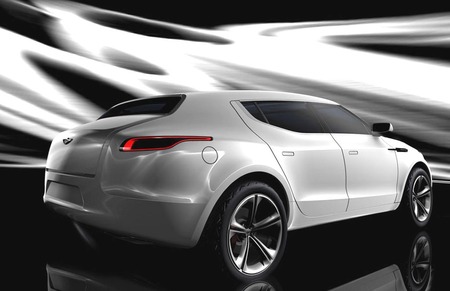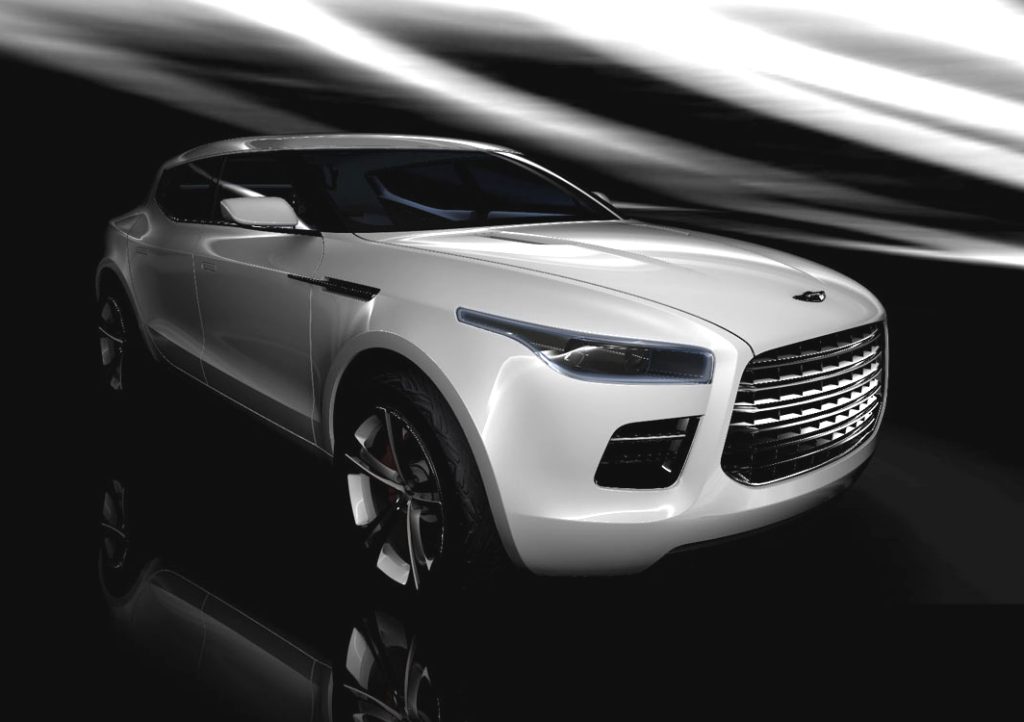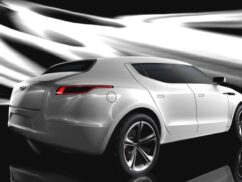Aston Martin revives Lagonda for 4×4 concept

Aston Martin made a big deal out of reviving their dormant Lagonda nameplate, to be slapped onto a new set of luxury models. At the 2009 Geneva Auto Show, it turns out their first model will be a crossover SUV, as hinted by this concept. While no one ever asked for an Aston Martin SUV, it looks set to become a hall-of-shame hit alongside the likes of best-sellers such as the Porsche Cayenne and the BMW X6.

While the Lagonda Concept is a bit of a non-starter, with an unknown V12 under the bonnet mated to some sort of four-wheel-drive system, the original Lagonda cars have a long history in the business.
Lagonda is one of the great names in automotive history, a brand associated with luxury, performance, grace and exclusivity. Since the first Lagonda production car, was built 100 years ago by the American-born Wilbur Gunn, the Lagonda name has undergone several incarnations, before it soon began to excel at creating racing cars and sporting saloons.
Gunn’s first car was built in his home workshop in Middlesex, England in 1909. In 1910, Gunn drove his 16/18hp Lagonda Tourer to victory in the Russian Reliability Trial, a spectacular event run by the Imperial Automobile Club of Russia as a public relations exercise for the country’s nascent road system. The win brought in many orders, and Gunn focused his attention on the Russian market, establishing dealerships in St Petersburg and Moscow in 1910.
In truth, Russian roads presented entrants with daunting driving conditions and the route, which included St Petersburg, Riga, Kiev and Moscow, was a rigorous test for any car. Gunn’s success was a vindication of the Lagonda’s sturdy build and swift performance. It was not until the following year that Lagonda began marketing cars in its home country, beginning a limited production of light cars that was eventually halted by the First World War.
Throughout the 20s and 30s, the company expanded its premises in Staines, England with the light cars giving way to more substantial touring models. Lagonda came to epitomise the Edwardian passion for setting new records and exploring new territories, with robust and reliable vehicles that could effortlessly forge trans-continental links.
In 1933, the manufacturer launched the M45 at the Olympia Motor Show in London, a sporting tourer powered by the Henry Meadows-designed six-cylinder 4.5-litre engine. The prototype was driven by the aristocrat and enthusiast Edward Russell, Lord de Clifford, from Dieppe to Brindisi in Greece, beating the express train along the same route by some 14 hours. The result was a media sensation.
The M45 quickly became known as a car for the discerning sportsman, fast and capable yet also sufficiently comfortable for long journeys. In its day it had the largest engine in its class, a distinction that attracted owners like the land speed record holder Sir Malcolm Campbell, who had his M45 painted in his signature blue.
The emerging sport of long-distance endurance racing also became an integral part of Lagonda’s development. In June 1935, a lightweight version of the M45 won the Le Mans 24 hours, with John Hindmarsh and Luis Fontes behind the wheel. This was a landmark achievement for the brand, as well as a highpoint of British sports car racing in the interwar era following Bentley’s heyday in the 1920s.The same month, Lagonda was bought by Alan Good, a charismatic British lawyer whose first task was to enlist the skills of engineer W.O. Bentley. The results were the LG45 styled by Frank Feeley that represented the apex of the engineering skills of the time. In 1936, W.O. Bentley designed Lagonda’s first V12, an engine that was perfectly at home in the majestic long-wheelbase version of the new chassis.
The Lagondas of the 1930s demonstrated total harmony between engineering and appearance, including the stately LG6 model introduced in 1937. W.O. Bentley’s diligent innovation and refinement continued throughout the war, and the company developed the LG6 into a V12 model, an even more ‘imposing and dignified’ saloon that sadly ceased production before the start of the war. Simultaneously, the engineer developed a new six-cylinder engine, during the war, the benefits of which were soon to be reaped by Aston Martin.
Aston Martin’s association with Lagonda began in 1947, when David Brown, the marque’s new owner, purchased the company for £52,500. The collaboration gave Aston Martin access to W.O.Bentley’s new 2.6L DOHC six cylinder engine, as well as the talents of the company’s long-serving bodywork stylist Frank Feeley.
Feeley was responsible for the elegant drophead variant of the new 2.6 litre, the first Lagonda of the David Brown era, produced from 1948 to 1953. At the end of 1952 the 2.6 litre was developed into the 3.0 litre, which used a revised version of the W.O. Bentley engine. The two-door saloon was soon joined by a four-door and a drophead coupe. The next Lagonda was the Touring-designed Rapide of 1963, a sleek four-door saloon that shared many components with the Aston Martin DB4. Fifty-five were built, of which 48 survive. In the late 1960s, Aston Martin’s head designer, William Towns, developed a new four-door saloon from the Aston Martin DBS. Just seven examples were built in the mid 1970s.
In 1976, Aston Martin announced a Lagonda for a new era, a unique, innovative car designed by William Towns in the contemporary ‘wedge’ fashion he made his own. Standing aesthetically and technologically distinct from the Aston Martin range, the Lagonda was bold and experimental, a high performance luxury saloon for the truly discerning.
The Lagonda name was briefly revived for the Vignale Concept, an imposing luxury saloon created by Ghia Design in 1993. One example survives. The name was also used for the strictly limited production of the Lagonda Virage Saloon and Shooting Brake in 1994.
Lagonda’s history is long and eventful, encompassing two of the most significant figures in twentieth century British engineering, W.O.Bentley and David Brown, racing glory and some of the most dramatic designs in automotive history.
In the 21st century, Lagonda will return, bringing a sense of adventure and the avant-garde to the luxury car market, honouring a remarkable history while also making a bold statement for the future.
Expect the production version to debut sometime in 2011, assuming the recession doesn’t get worse by then.




Comments
Faisal
OH NO!!!!! 😯
BJD(Boris)
*sighs* now, the next thing will prob’ly be a koenigsegg or lambo SUV…
royer
he he and then they will compare its performance with Xterra and advise Cops to buy these beamers
royer
Boris man where are you..not seen you posting comments on website…there’s a big suv fight going on in myride..if all members come face to face..then definetly fight will happen. 😛
eazy_mas
Boris Lambo does have a 4×4 with a countash engine it the LM
Don Raj
sad design
Sting
hmmm, mirror image of the new FX50.